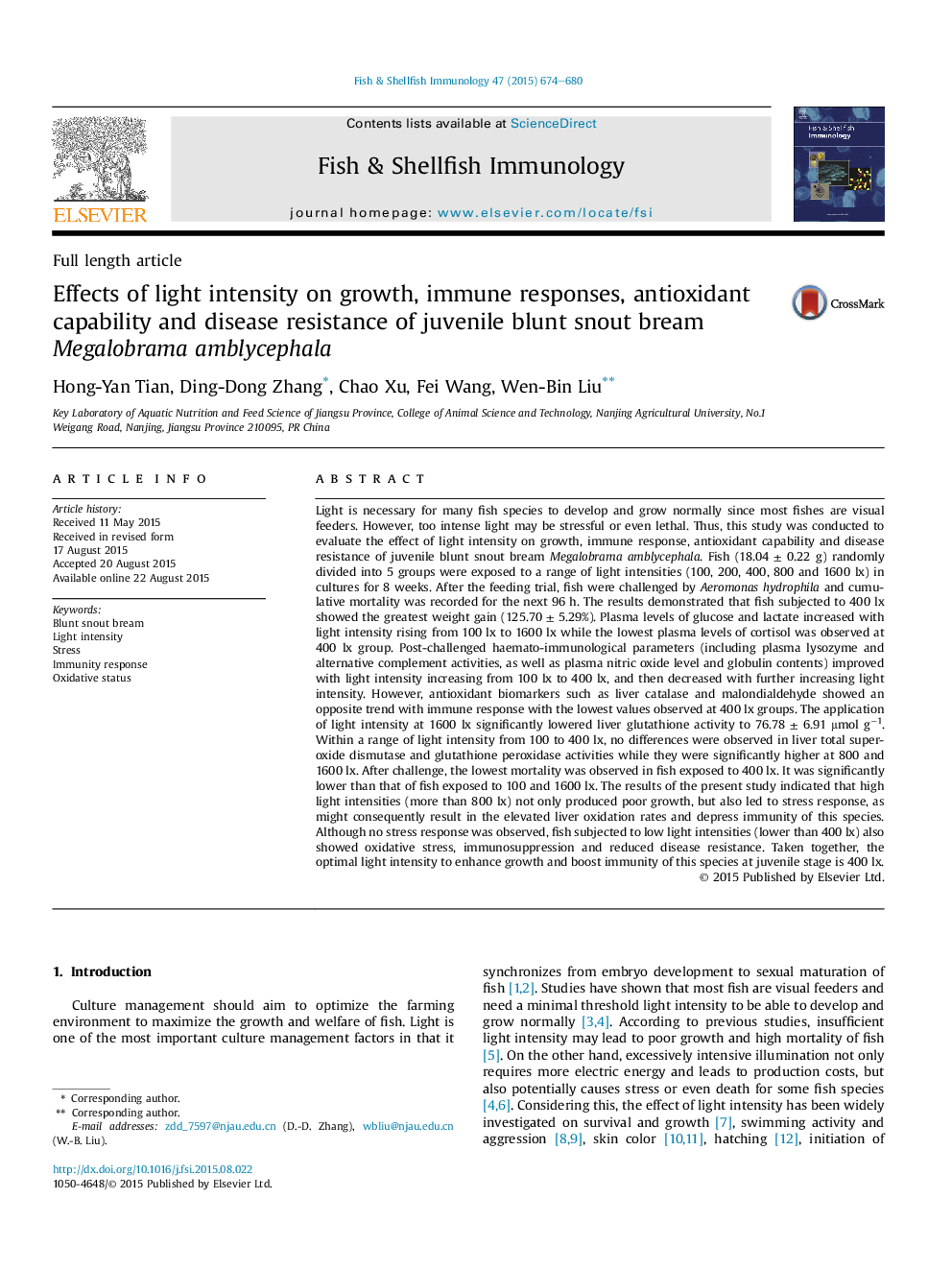| کد مقاله | کد نشریه | سال انتشار | مقاله انگلیسی | نسخه تمام متن |
|---|---|---|---|---|
| 2430992 | 1106741 | 2015 | 7 صفحه PDF | دانلود رایگان |
• Light intensity and health status of blunt snout bream are tightly linked.
• The best growth and innate immunity was observed in fish subjected to 400 lx.
• Low light intensity led to depressed growth, antioxidant capability and immunity.
• High light intensity caused stress, elevated oxidative rate and immunosuppression.
• After challenge, both low and high light intensity led to high mortality rate.
Light is necessary for many fish species to develop and grow normally since most fishes are visual feeders. However, too intense light may be stressful or even lethal. Thus, this study was conducted to evaluate the effect of light intensity on growth, immune response, antioxidant capability and disease resistance of juvenile blunt snout bream Megalobrama amblycephala. Fish (18.04 ± 0.22 g) randomly divided into 5 groups were exposed to a range of light intensities (100, 200, 400, 800 and 1600 lx) in cultures for 8 weeks. After the feeding trial, fish were challenged by Aeromonas hydrophila and cumulative mortality was recorded for the next 96 h. The results demonstrated that fish subjected to 400 lx showed the greatest weight gain (125.70 ± 5.29%). Plasma levels of glucose and lactate increased with light intensity rising from 100 lx to 1600 lx while the lowest plasma levels of cortisol was observed at 400 lx group. Post-challenged haemato-immunological parameters (including plasma lysozyme and alternative complement activities, as well as plasma nitric oxide level and globulin contents) improved with light intensity increasing from 100 lx to 400 lx, and then decreased with further increasing light intensity. However, antioxidant biomarkers such as liver catalase and malondialdehyde showed an opposite trend with immune response with the lowest values observed at 400 lx groups. The application of light intensity at 1600 lx significantly lowered liver glutathione activity to 76.78 ± 6.91 μmol g−1. Within a range of light intensity from 100 to 400 lx, no differences were observed in liver total superoxide dismutase and glutathione peroxidase activities while they were significantly higher at 800 and 1600 lx. After challenge, the lowest mortality was observed in fish exposed to 400 lx. It was significantly lower than that of fish exposed to 100 and 1600 lx. The results of the present study indicated that high light intensities (more than 800 lx) not only produced poor growth, but also led to stress response, as might consequently result in the elevated liver oxidation rates and depress immunity of this species. Although no stress response was observed, fish subjected to low light intensities (lower than 400 lx) also showed oxidative stress, immunosuppression and reduced disease resistance. Taken together, the optimal light intensity to enhance growth and boost immunity of this species at juvenile stage is 400 lx.
Journal: Fish & Shellfish Immunology - Volume 47, Issue 2, December 2015, Pages 674–680
